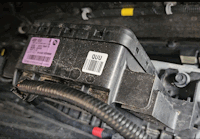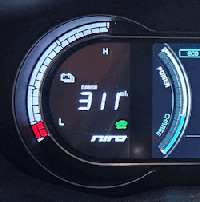Anti-theft software Buried in the middle an item on car thefts from Consumer Reports was the news that Hyundai and Kia are offering a free anti-theft software upgrade for their key-start vehicles, which, on the whole, remain the most popular with car thieves. The Highway Loss Data Institute (HLDI) says that many older — read …
Tag: Kia
Permanent link to this article: https://dashboardsymbols.com/2025/08/kia-software-update-surprises/
Permanent link to this article: https://dashboardsymbols.com/2025/08/hyundai-and-kia-offer-free-anti-theft-software-upgrade/
EU vs US Niro VESS sound
Niro VESS sound As I’ve noted previously, the 2022 back-up Kia Niro VESS sound is painfully loud. Then, I ran into a video that does a direct comparison between the North American noise maker and the European version. The difference, below, is remarkable. The US version is first, and be aware that it is truly …
Permanent link to this article: https://dashboardsymbols.com/2025/08/eu-vs-us-niro-vess-sound/
For the sake of the driving public, EV makers must reign in the clever
Reign in the clever We’ve done four videos over the last few weeks helping drivers get into and jump start their electric vehicles (EVs) with dead 12-volt start batteries. Starting a fifth video leaves us frankly angry and really wanting manufacturers to reign in the clever. We’ve had to describe getting under the hood of …
Permanent link to this article: https://dashboardsymbols.com/2025/07/for-the-sake-of-the-driving-public-ev-makers-must-reign-in-the-clever/
Back-up cameras continue to be a big hit with NHTSA
Back-up cameras Its not so long ago that airbag recalls dominated the National Highway Traffic Safety Administration (NHTSA) announcements on X. These days, the “focus” is clearly on back-up cameras. Over the last 30 days, another seven recalls were announced involving some 25 models, all to address rear view cameras whose displays may not display. …
Permanent link to this article: https://dashboardsymbols.com/2025/07/back-up-cameras-continue-to-be-a-big-hit-with-nhtsa/
VESS is restored to the Niro, with a twist
VESS is restored I’ve fussed with and complained about the Kia Niro Virtual Engine Sound System (VESS) for months and had disconnected it following the video linked here. But this left potential liability issues and so VESS is restored while adding a disconnect switch following the instructions from another video linked below. The issue is …
Permanent link to this article: https://dashboardsymbols.com/2025/07/vess-is-restored-to-the-niro-with-a-twist/
What happens when the Niro is charged to 100%
Charged to 100% A bit ago, I noted that Kia recommends charging the Kia Niro EV to 100% once a month. So, I charged to 100% two days ago with astounding results. For the record, I don’t put many miles on the car and will likely only charge to 100% every other month. First note …
Permanent link to this article: https://dashboardsymbols.com/2025/07/what-happens-when-the-niro-is-charged-to-100/



Kia software update surprises
Kia software I’ve been driving the Kia Niro for nearly a year and was sitting on a Kia software update because the car had refused to accept it. I thought that I would head to a dealer at some point and get them to handle it. however, a few months ago, the company managed to …
Continue reading